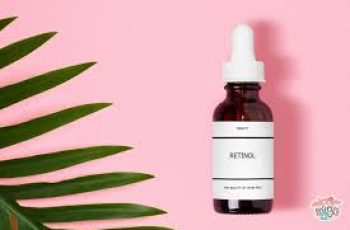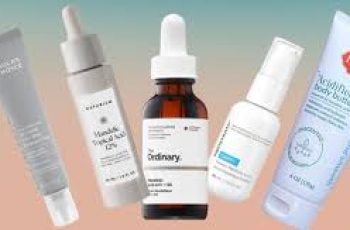
Can I Use Lactic Acid After Salicylic Acid Cleanser? A Safe & Effective Skincare Guide
Skincare layering can be confusing, especially when combining powerful ingredients like acids. One common question we hear is: “Can I use lactic acid after salicylic acid cleanser?”
If you’ve ever wondered the same, you’re not alone. These two ingredients are skincare powerhouses—but using them together requires a little strategy. In this post, we’ll break it all down step by step.
Let’s explore the benefits of both acids, how to use them safely, and when to incorporate each one into your routine without risking irritation or over-exfoliation.
What Is Lactic Acid?
Lactic acid is a type of alpha hydroxy acid (AHA) that gently exfoliates the skin.
It’s derived from fermented milk, though today it’s mostly made synthetically for skincare use.
This acid works by dissolving dead skin cells on the surface, revealing a brighter, smoother complexion.
It also helps reduce dullness, rough texture, and uneven skin tone caused by buildup and environmental stress.
Lactic acid has larger molecules compared to other AHAs like glycolic acid. This means it doesn’t penetrate too deeply into the skin.
Because of this, lactic acid is gentler and more suitable for sensitive skin types.
It also has hydrating properties, thanks to its natural humectant ability to pull moisture into the skin.
This makes lactic acid a dual-action exfoliator—both resurfacing and hydrating the skin.
What Is Salicylic Acid?
Salicylic acid is a beta hydroxy acid (BHA) known for its deep pore-cleansing abilities.
Unlike AHAs, BHAs are oil-soluble. This allows salicylic acid to penetrate into clogged pores and remove sebum, dirt, and debris.
It’s highly effective for oily, acne-prone, and blackhead-prone skin types.
By clearing out the pores, salicylic acid helps prevent breakouts, reduce inflammation, and smooth uneven skin texture.
It also has anti-inflammatory and antibacterial properties, which makes it a favorite for calming blemishes.
Salicylic acid is commonly found in face washes, toners, spot treatments, and exfoliants.
In cleanser form, the concentration of salicylic acid is generally lower than in serums or leave-on treatments.
This allows for more frequent use without causing irritation, especially for daily cleansing.
Can You Use Lactic Acid After Salicylic Acid Cleanser?
Yes, you can use lactic acid after salicylic acid cleanser, but with some important precautions.
Both acids exfoliate the skin, but in different ways and at different levels.
Salicylic acid clears deep within pores, while lactic acid exfoliates the outer layer of dead skin.
When used correctly, these two acids can complement each other beautifully. But using them together can also cause dryness or irritation if your skin isn’t ready.
If you’re new to acids or have sensitive skin, start by introducing each one slowly and on alternate days.
Once your skin has built tolerance, you can combine them in a routine, starting with a salicylic acid cleanser and following with lactic acid in a serum or toner.
What Cleanser Should You Use with Lactic Acid?
Choosing the right cleanser depends on your skin type and concerns.
For oily and acne-prone skin, a salicylic acid cleanser followed by a lactic acid product works well.
This pairing helps regulate oil, unclog pores, and remove surface buildup.
For dry or sensitive skin, stick to a gentle cleanser and use lactic acid as your main exfoliator.
Team it with ingredients like hyaluronic acid or niacinamide to maintain hydration and barrier strength.
Lactic acid’s mildness makes it an excellent AHA for dry or sensitive skin types who want the benefits of exfoliation without irritation.
Always patch test new combinations to avoid reactions, and consult a dermatologist if you’re unsure.
What Should You Not Mix with Salicylic Acid?
Some ingredients should be used cautiously when combined with salicylic acid.
Retinol is one of them. Using retinol with salicylic acid can cause peeling, redness, and over-exfoliation.
However, if salicylic acid is in a cleanser (which washes off), you can still use retinol—just not at the same time.
A good routine is to use salicylic acid in the morning and retinol at night. This spacing helps reduce potential irritation.
Also avoid combining salicylic acid with other strong exfoliants like glycolic acid unless your skin is very tolerant.
Is It OK to Use Lactic Acid Every Day?
That depends on the product and your skin’s tolerance.
Rinse-off lactic acid products like cleansers or toners are usually fine for daily use.
Leave-on formulas, such as serums or masks with higher concentrations, should be used a few times a week.
Overuse of lactic acid can lead to dryness, irritation, and barrier damage.
If you’re using other exfoliants like salicylic acid, alternate your lactic acid products to avoid overdoing it.
Always follow with sunscreen in the morning, as AHAs increase your skin’s sensitivity to UV damage.
Can You Use Lactic Acid on Pimples?
Yes, you can apply lactic acid to pimple-prone skin, but results may vary based on the formula used.
Lactic acid is effective for surface exfoliation and improving skin clarity over time.
However, it’s not as strong on active acne or clogged pores as salicylic acid or benzoyl peroxide.
For treating pimples quickly, stronger treatments or chemical peels containing lactic acid may work better.
At-home products with lactic acid can support your acne-fighting routine by smoothing skin and reducing dark spots.
For severe or cystic acne, consult with a skincare professional for the most effective treatments.
Can You Mix Salicylic Acid and Lactic Acid?
Yes, mixing salicylic acid and lactic acid is safe for many people—but proceed with care.
Salicylic acid targets the inside of the pore, while lactic acid targets the skin’s surface.
Because they work in different areas, they can complement each other well.
But using them together can dry out the skin if you’re not cautious with the concentrations or frequency.
Start with one acid at a time. If your skin shows no irritation after a few weeks, try layering or alternating them in your routine.
Always moisturize well and apply SPF in the morning to protect your skin after using acids.
Does Lactic Acid Help with Blackheads?
Lactic acid can help with blackheads, but it’s not the most potent option.
It works by softening and removing dead skin cells on the surface that can trap oil and debris.
Salicylic acid and glycolic acid are generally more effective for clearing blackheads due to their deeper penetration.
However, lactic acid is a good option for sensitive skin or when you want gentle exfoliation without stripping your skin.
For best results, use lactic acid in combination with other blackhead-fighting products or treatments.
When Should You Use Lactic Acid?
Use lactic acid when your skin feels rough, dull, flaky, or shows signs of uneven texture or tone.
It’s especially helpful if you’re experiencing hyperpigmentation, dry patches, or want a boost in brightness.
You’ll find lactic acid in many skincare formats—cleansers, toners, serums, masks, and moisturizers.
This gives you flexibility in choosing the right strength and format for your skin needs.
If you’re new to exfoliating acids, lactic acid is a gentle way to begin. It’s ideal for dry, sensitive, or mature skin types.
Start by using it 2-3 times a week and increase frequency as your skin builds tolerance.
How to Layer Skincare Products Correctly
To get the best results, always apply skincare products from thinnest to thickest consistency.
Start with cleanser → toner → serum → moisturizer → sunscreen (in the morning).
If you’re using both salicylic acid and lactic acid, use the salicylic acid cleanser first, then follow with lactic acid serum or toner.
Leave time between each step to allow the product to absorb fully before applying the next.
This layering technique ensures each ingredient works effectively and minimizes the risk of pilling or irritation.
Final Tips for Using Lactic Acid After Salicylic Acid Cleanser
Yes, you can use lactic acid after a salicylic acid cleanser—if your skin can handle it.
Introduce each acid slowly and watch how your skin reacts.
Always moisturize after exfoliating to prevent dryness and irritation.
Never forget your SPF—both acids increase sun sensitivity.
Consider alternating use on different days if irritation occurs.
Patch test new combinations before applying them all over your face.
When in doubt, consult a dermatologist or licensed skincare professional.
Still unsure what’s best for your skin?
Join us on Instagram for more skincare tips, expert advice, and exclusive updates. You can DM our team anytime—we’re here to help you glow safely and smartly!



